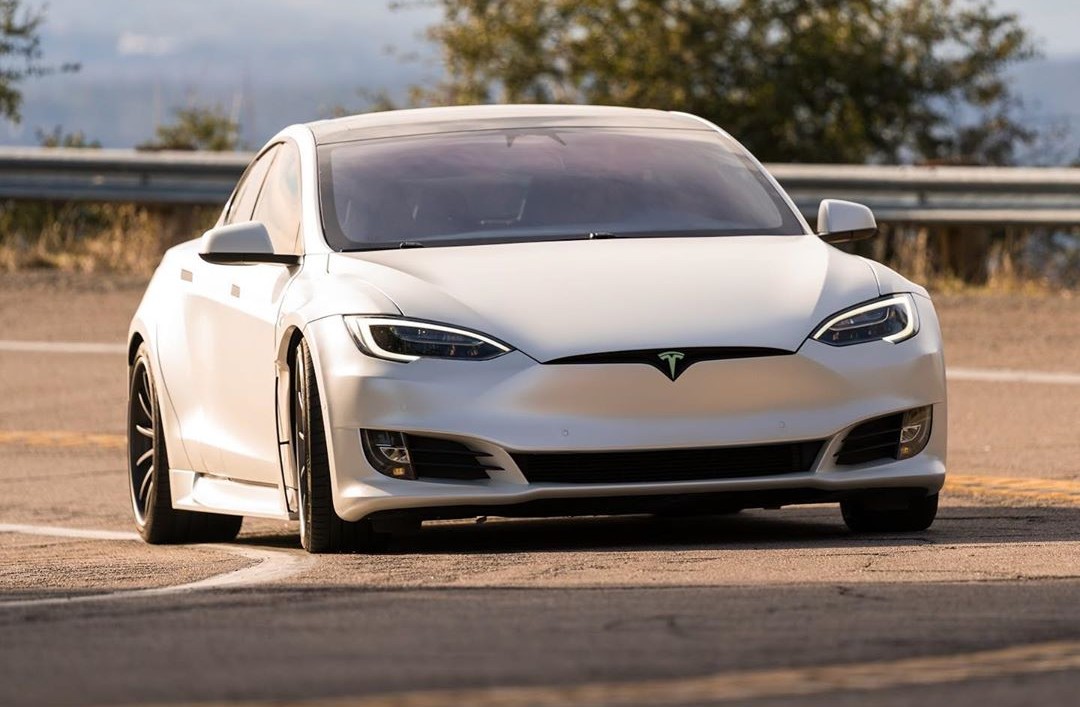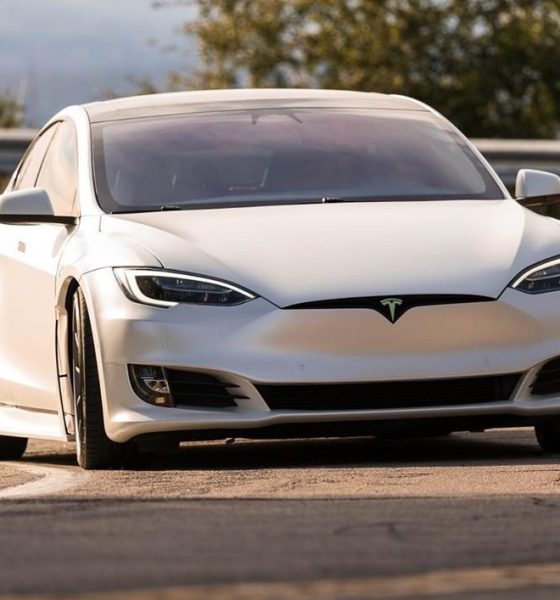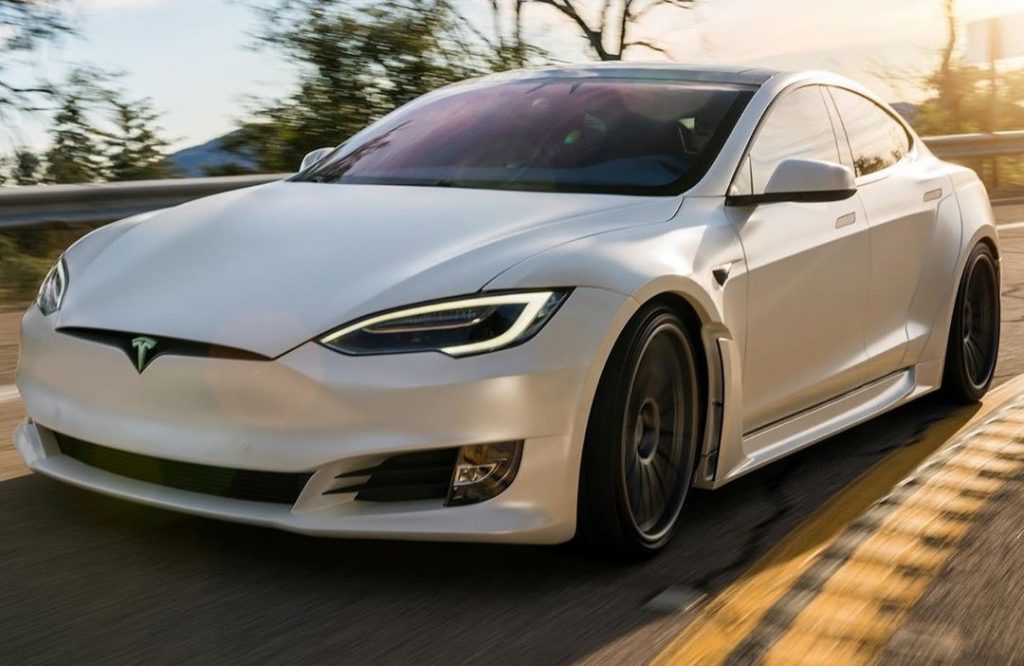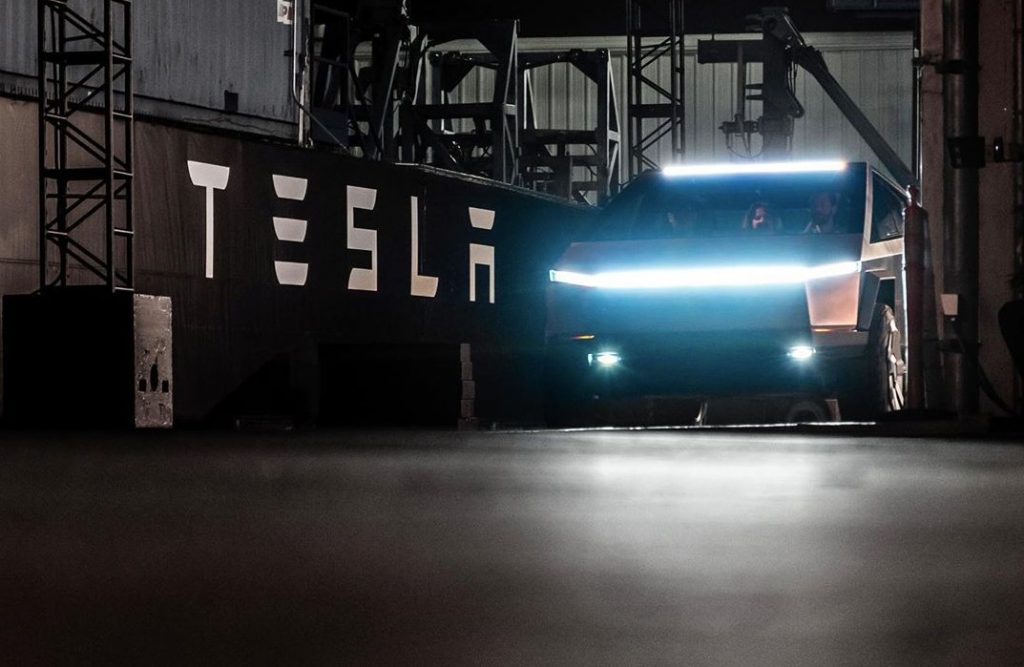

News
Tesla’s 400-mile Model S is a subtle update, but it’s a chilling reminder to rival carmakers
There is a particularly interesting trend happening in the electric vehicle sector. While it is undeniable that Tesla is leading the industry’s shift to EVs, veteran carmakers are prone to claim that they have or are developing technology that is at par or superior to the electric car maker’s innovations. The Tesla Model S’ 402-mile EPA rating subtly sends a message that this is not necessarily the case.
For some time now, there has been a lot of talk surrounding Tesla and its upcoming Battery Day event. The company has been pretty thin on the specifics of the event, but speculations are abounding that discussions will be held surrounding the company’s next-generation batteries. Tesla has not formally hinted at the details of these batteries, though all signs point to cells that would be able to last a million miles. Discussions about other innovations such as cobalt-free cells for China-made Model 3s are also expected to be held at the event.
Similar to how vehicles like the Porsche Taycan and the Audi e-tron were dubbed as “Tesla Killers” in previous years, veteran automakers such as GM appear to be keen on establishing the idea that it is not being left behind in the EV race. Just last month, for example, GM Executive Vice President Doug Parks stated that the automaker’s own “million-mile” battery is “almost there.” Parks stated that there are multiple teams within GM that are working on zero cobalt batteries as well.

Such statements from GM only validate Tesla’s points about electric vehicles. The fact that the veteran automaker’s battery plans seem to be inspired, at least in some way, by the younger EV maker means that the auto industry has now reached a point where electric powered transportation is a given. That being said, there is very little doubt that the Model S’ updated EPA ratings, which show that the 100 kWh flagship sedan could go 402 miles on a single charge, is likely sending some chills down the spine of Tesla’s rivals.
As noted by Tesla CEO Elon Musk, every Model S that has been produced since January has been equipped with a 402 mile range. This feat, as stated by the company in an announcement on its official website, was accomplished through a variety of means, including significant mass reduction, new aero wheels that optimize efficiency, increased drive unit efficiencies, and optimized regenerative braking.
What this means is that Tesla was able to draw out 400 miles of EPA range from a 100 kWh battery pack using its current battery technology. The 400-mile Model S today is just a hyper-optimized version of the Raven series that came out last year. Unless Tesla states otherwise on Battery Day, it appears that the current generation Raven Model S is not yet equipped with the company’s next-generation million-mile batteries.

It should be noted that other companies have pledged to release vehicles with a range of 400 miles as well. Electric pickup maker Rivian’s flagship R1T pickup truck goes 400 miles too, but that vehicle is equipped with a 180 kWh battery pack. The GMC Hummer EV, widely speculated to be a legitimate competitor to the Tesla Cybertruck, is also poised to be released with a 400-mile range. But just like the Rivian R1T, there’s a good chance that its battery pack will be substantially bigger than the 100 kWh pack used in Tesla’s flagship sedan.
Of course, it would be easy to argue that larger vehicles like the Rivian R1T and the GMC Hummer EV would obviously need more batteries due to their size, but it should be noted that Tesla’s Cybertruck, which will likely have a battery that’s far larger than the Model S’ 100 kWh pack, has some impressive range as well. During its unveiling, Elon Musk noted that the all-electric pickup’s tri-motor variant will have over 500 miles of range. The specifics of the Cybertruck’s battery have not been disclosed by Tesla yet, though it is almost certain that it will be utilizing the company’s million mile battery cells.
So what does this mean for the Model S? With a million-mile battery and a 100 kWh pack, the flagship sedan’s succeeding generations will most likely achieve a range estimate that’s even more impressive than its current 402-mile EPA rating. And this, ultimately, is something that will be very hard to meet or compete with, especially among veteran automakers that have not dedicated the same amount of time and effort into developing battery technology from the ground up.

News
Tesla Model Y L is gaining momentum in China’s premium segment
This suggests that the addition of the Model Y L to Tesla China’s lineup will not result in a case of cannibalization, but a possible case of “premiumization” instead.

Tesla’s domestic sales in China held steady in November with around 73,000 units delivered, but a closer look at the Model Y L’s numbers hints at an emerging shift towards pricier variants that could very well be boosting average selling prices and margins.
This suggests that the addition of the Model Y L to Tesla China’s lineup will not result in a case of cannibalization, but a possible case of “premiumization” instead.
Tesla China’s November domestic numbers
Data from the a Passenger Car Association (CPCA) indicated that Tesla China saw domestic deliveries of about 73,000 vehicles in November 2025. This number included 34,000 standard Model Y units, 26,000 Model 3 units, and 13,000 Model Y L units, as per industry watchers.
This means that the Model Y L accounted for roughly 27% of Tesla China’s total Model Y sales, despite the variant carrying a ~28% premium over the base RWD Model Y that is estimated to have dominated last year’s mix.
As per industry watcher @TSLAFanMtl, this suggests that Tesla China’s sales have moved towards more premium variants this year. Thus, direct year-over-year sales comparisons might miss the bigger picture. This is true even for the regular Model Y, as another premium trim, the Long Range RWD variant, was also added to the lineup this 2025.
November 2025 momentum
While Tesla China’s overall sales this year have seen challenges, the Model Y and Model 3 have remained strong sellers in the country. This is especially impressive as the Model Y and Model 3 are premium-priced vehicles, and they compete in the world’s most competitive electric vehicle market. Tesla China is also yet to roll out the latest capabilities of FSD in China, which means that its vehicles in the country could not tap into their latest capabilities yet.
Aggregated results from November suggest that the Tesla Model Y took the crown as China’s #1 best-selling SUV during the month, with roughly 34,000 deliveries. With the Model Y L, this number is even higher. The Tesla Model 3 also had a stellar month, seeing 25,700 deliveries during November 2025.
Cybertruck
Tesla Cybertruck earns IIHS Top Safety Pick+ award
To commemorate the accolade, the official Cybertruck account celebrated the milestone on X.

The Tesla Cybertruck has achieved the Insurance Institute for Highway Safety’s (IIHS) highest honor, earning a Top Safety Pick+ rating for 2025 models built after April 2025.
The full-size electric pickup truck’s safety rating is partly due to the vehicle’s strong performance in updated crash tests, superior front crash prevention, and effective headlights, among other factors. To commemorate the accolade, the official Cybertruck account celebrated the milestone on X.
Cybertruck’s IIHS rating
As per the IIHS, beginning with 2025 Cybertruck models built after April 2025, changes were made to the front underbody structure and footwell to improve occupant safety in driver-side and passenger-side small overlap front crashes. The moderate overlap front test earned a good rating, and the updated side impact test also received stellar marks.
The Cybertruck’s front crash prevention earned a good rating in pedestrian scenarios, with the standard Collision Avoidance Assist avoiding collisions in day and night tests across child, adult crossing, and parallel paths. Headlights with high-beam assist compensated for limitations, contributing to the top award.
Safest and most autonomous pickup
The Cybertruck is one of only two full-size pickups to receive the IIHS’ Top Safety Pick + rating. It is also the only one equipped with advanced self-driving features via Tesla’s Full Self-Driving (Supervised) system. Thanks to FSD, the Cybertruck can navigate inner city streets and highways on its own with minimal supervision, adding a layer of safety beyond passive crash protection.
Community reactions poured in, with users praising the vehicle’s safety rating amidst skepticism from critics. Tesla itself highlighted this by starting its X post with a short clip of a Cybertruck critic who predicted that the vehicle will likely not pass safety tests. The only question now is, of course, if the vehicle’s Top Safety Pick+ rating from the IIHS will help the Cybertruck improve its sales.
News
Tesla stands to gain from Ford’s decision to ditch large EVs
Tesla is perhaps the biggest beneficiary of Ford’s decision, especially as it will no longer have to deal with the sole pure EV pickup that outsold it from time to time: the F-150 Lightning.

Ford’s recent decision to abandon production of the all-electric Ford F-150 Lightning after the 2025 model year should yield some advantages for Tesla.
The Detroit-based automaker’s pivot away from large EVs and toward hybrids and extended-range EVs that come with a gas generator is proof that sustainable powertrains are easy on paper, but hard in reality.
Tesla is perhaps the biggest beneficiary of Ford’s decision, especially as it will no longer have to deal with the sole pure EV pickup that outsold it from time to time: the F-150 Lightning.
Here’s why:
Reduced Competition in the Electric Pickup Segment
The F-150 Lightning was the Tesla Cybertruck’s primary and direct rival in the full-size electric pickup market in the United States. With Ford’s decision to end pure EV production of its best-selling truck’s electric version and shifting to hybrids/EREVs, the Cybertruck faces significantly less competition.

Credit: Tesla
This could drive more fleet and retail buyers toward the Cybertruck, especially those committed to fully electric vehicles without a gas generator backup.
Strengthened Market Leadership and Brand Perception in Pure EVs
Ford’s pullback from large EVs–citing unprofitability and lack of demand for EVs of that size–highlights the challenges legacy automakers face in scaling profitable battery-electric vehicles.
Tesla, as the established leader with efficient production and vertical integration, benefits from reinforced perception as the most viable and committed pure EV manufacturer.

Credit: Tesla
This can boost consumer confidence in Tesla’s long-term ecosystem over competitors retreating to hybrids. With Ford making this move, it is totally reasonable that some car buyers could be reluctant to buy from other legacy automakers.
Profitability is a key reason companies build cars; they’re businesses, and they’re there to make money.
However, Ford’s new strategy could plant a seed in the head of some who plan to buy from companies like General Motors, Stellantis, or others, who could have second thoughts. With this backtrack in EVs, other things, like less education on these specific vehicles to technicians, could make repairs more costly and tougher to schedule.
Potential Increases in Market Share for Large EVs
Interestingly, this could play right into the hands of Tesla fans who have been asking for the company to make a larger EV, specifically a full-size SUV.
Customers seeking large, high-capability electric trucks or SUVs could now look to Tesla for its Cybertruck or potentially a future vehicle release, which the company has hinted at on several occasions this year.
With Ford reallocating resources away from large pure EVs and taking a $19.5 billion charge, Tesla stands to capture a larger slice of the remaining demand in this segment without a major U.S. competitor aggressively pursuing it.








